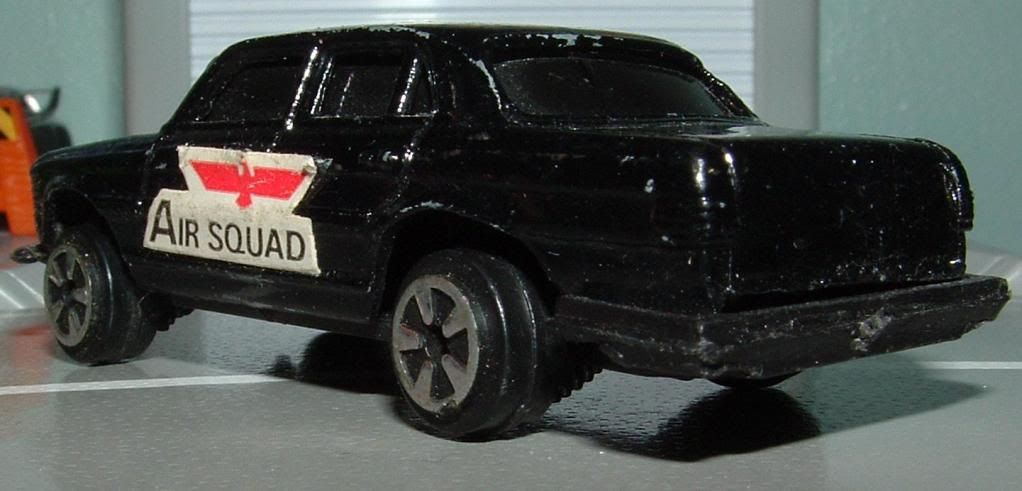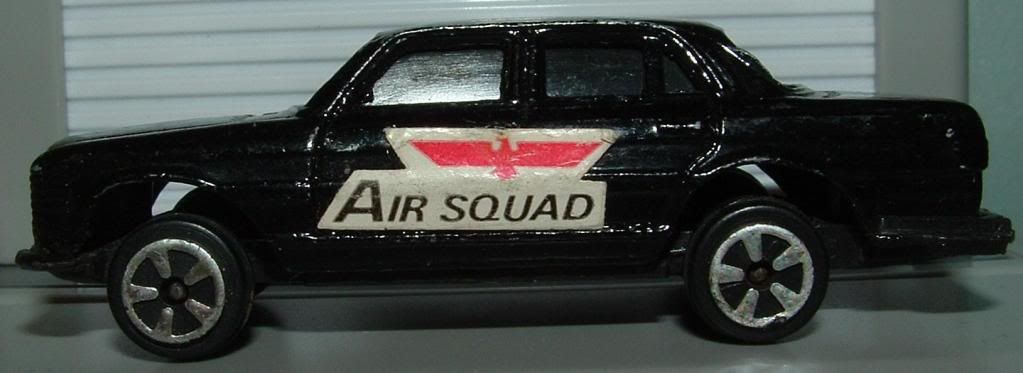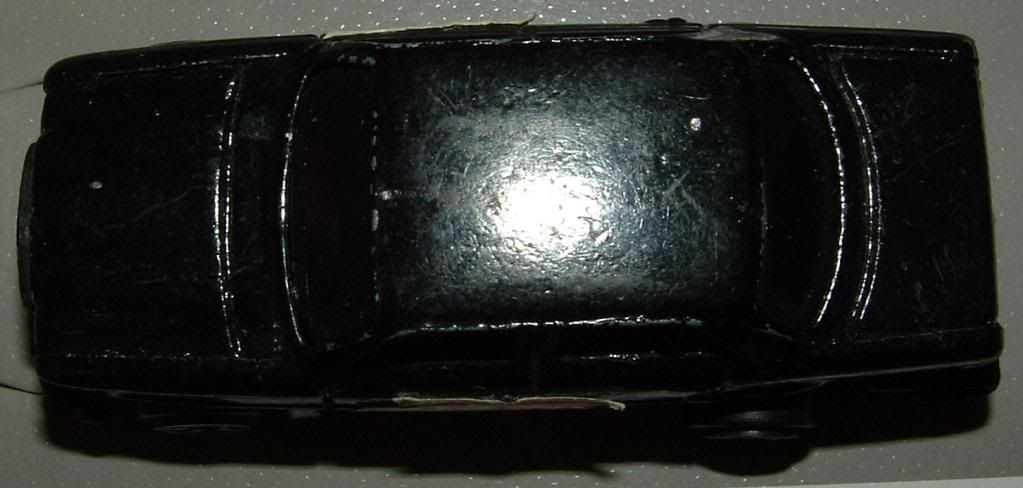
A blog focusing on 1/64 diecast from such popular brands as Hot Wheels, Matchbox, Johnny Lightning, M2 Machines, GreenLight, Tomica, Yat Ming, Majorette, MotorMax, Siku, Corgi, Guisval, Playart, Ertl, Zylmex, Racing Champions, & many more. Swifty's Garage features a daily Car Of The Day and news updates from your favorite brands!
Saturday, April 30, 2011
Car Of The Day: April 30, 2011
Today's car of the day is Universal's 1979 Mercedes-Benz 450SEL 6.9.
The Mercedes-Benz 450SEL 6.9 is a high-performance version of the S-Class luxury saloon. It was built on its own assembly line by Daimler-Benz in Stuttgart, Germany and based on the long-wheelbase version of the W116 chassis introduced in 1972. The model was generally referred to in the company's literature as the "6.9", to separate it from the regular 450SEL.
The 6.9 was first shown to the motoring press at the Geneva Auto Show in 1974, and produced between 1975 and 1981 in extremely limited numbers. It was billed as the flagship of the Mercedes-Benz car line, and the successor to Mercedes-Benz's original high-performance sedan, the 300SEL 6.3. The 6.9 also has the distinction of being among the first vehicles ever produced with optional electronically-controlled anti-lock brakes, first introduced by Mercedes-Benz and Bosch in 1978. The 6.9's successor — the top of range 500 SEL — continued the 6.9's remarkable self-leveling hydropneumatic suspension as an extra-cost option.
For more information and pictures of the real car please visit: Mercedes-Benz 450SEL 6.9
Universal, owners of Kidco and eventually Matchbox and Kenner Fast 111s, put out this sad example of the 450SEL. Probably inspired by the Matchbox casting (both missed the mark compared to the Tomica and Yat Ming versions) even though this casting debuted before the Universal acquisition of Matchbox. And it has Air Supply...er....Air Squad stickers on the side. This one was a RAOK from bangerkid45 at the Keystone CARnival. Thanks Jon!
The 6.9 was the first Mercedes-Benz to be fitted with the hydropneumatic self-levelling suspension system developed by Citroën in 1955, unlike the 600 and 6.3 which employed air suspensions. Using a combination of fluid-filled struts and nitrogen-filled pressure vessels or "accumulators" in lieu of conventional shock absorbers and springs, the system was pressurized by a hydraulic pump driven by the engine's timing chain. Compared to the new Mercedes-Benz system, Citroën's was belt-driven, exactly like a conventional power steering pump; failure of the Citroën system thus might result in loss of suspension. Conversely, every unit of the 6.9 was shipped with hard rubber emergency dampers that served as temporary springs and allowed the car to be driven in the event of a hydraulic failure. The special hydraulic fluid required by the system was stored in a tank inside the engine compartment. Not only was the system totally self-adjusting, ride height could be altered by a dash-mounted push-pull knob under the speedometer that raised the car an additional two inches (50 mm) for increased ground clearance. NHTSA decreed this feature illegal in the US market, but it could be enabled simply by removing a limiter at the tank-mounted control valve.
The suspension system gave the 4200 pound (1900 kg) car the benefits of a both a smooth ride and handling that allowed it, in the words of automotive journalist David E. Davis, to be "tossed about like a Mini." The car also featured a model W3B 050 three-speed automatic transmission unique to the 6.9 and a standard ZF limited slip differential both for enhanced roadholding performance on dry pavement and enhanced traction in inclement weather.
Four-wheel disc brakes and four-wheel independent suspension were standard across the W116 model range.
Subscribe to:
Post Comments (Atom)






No comments:
Post a Comment